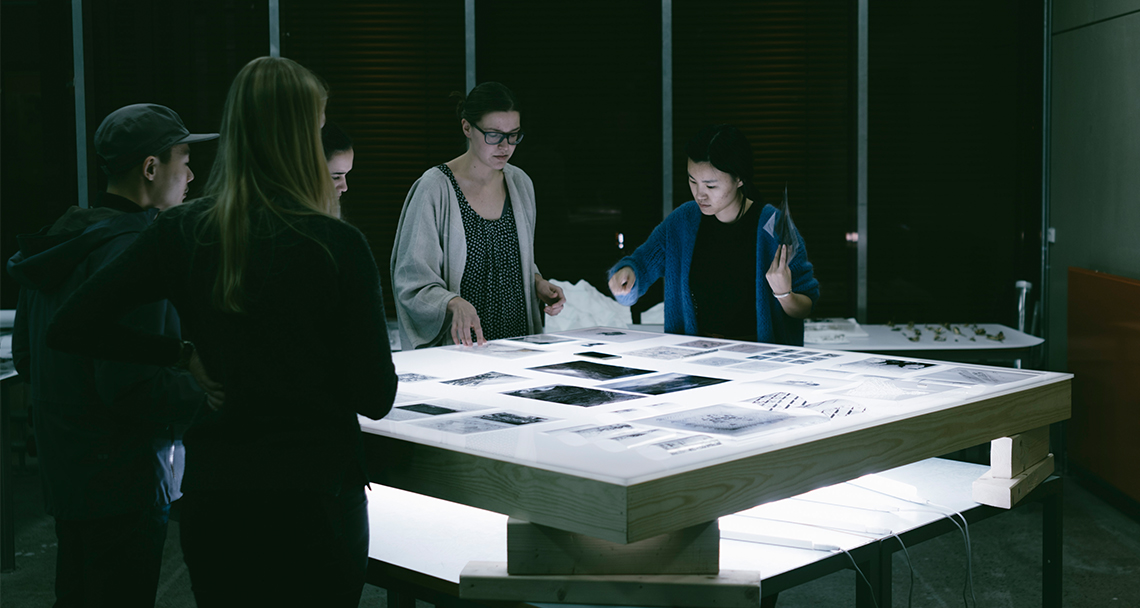The International Master of Landscape Architecture is grounded on studio-based instruction in an environment of close interaction with Scandinavian and international practitioners, researchers, and educators. AHO promotes experimentation with diverse landscape media.
The two-year programme is structured around three core topics: Commons, Systems and Form. Each studio course is flanked by an elective course ranging from theory, history or technology. The fourth semester is an independent diploma semester.
First semester: Commons
The past, present and future of open spaces for civic life are traditionally represented by the typologies of parks, boulevards, plazas and large-scale park systems. However, these typologies are evolving as we are confronted with new environmental and social challenges. The first semester introduces students to large scale park systems. It provides knowledge and skills in landscape architecture with particular emphasis on synthesizing knowledge of the natural environment, society, and culture as a basis for the anticipatory design of public parks and public spaces. The semester also provides a broad insight into theory and concepts in landscape architecture through lectures, reading and visual analysis, with the aim to promote the students’ insights in cross-cultural idea and method transfers.
Second semester: Systems
A systemic approach empowers landscape architects to operate within the increased complexity of a discipline where different natural and technological systems intersect, allowing them to visualize and make spatial decisions based on the reading and design of such systems. Skills and literacy on landscape systems also allows landscape architects to contribute to contemporary discussions on urbanization. The second semester provides advanced knowledge and skills in spatial design at different scales with particular emphasis on how natural and technological systems work together and give shape to a socially and environmentally sustainable urban landscape.
Third semester: Form
Form is the common language and means of expression of all design disciplines. Landscape architects give form to outdoor spaces, their formal skills allow them to translate their environmental and social agendas into concrete proposals. The third semester's studio engages with artistic aspect of landscape architecture and the particular contribution of the discipline to design culture at large using live matter as media for design. Longstanding questions of geometry, composition, rhythm, and structure are tested in relation to contemporary environmental challenges and new design tools.
This semester also offers the opportunity to go on exchange abroad. Pre-diploma in the 3rd semester must be completed and approved before the start of the 4th semester.
Fourth semester: Diploma thesis
The diploma semester focuses on the development of an independent project. The thesis must demonstrate ability to pursue projects contextualised within contemporary discourse. The projects address contemporary methods and relevant issues in landscape architecture. 
Teaching and research staff
- Professor Karin Helms
- Professor Sabine Müller
- Professor Luis Callejas
- Professor Janike Kampevold Larsen
- Professor Rainer Stange
- Associate Professor Giambattista Zaccariotto
- Assistant Professor Miguel Hernandez Quintanilla
Curriculum (courses)